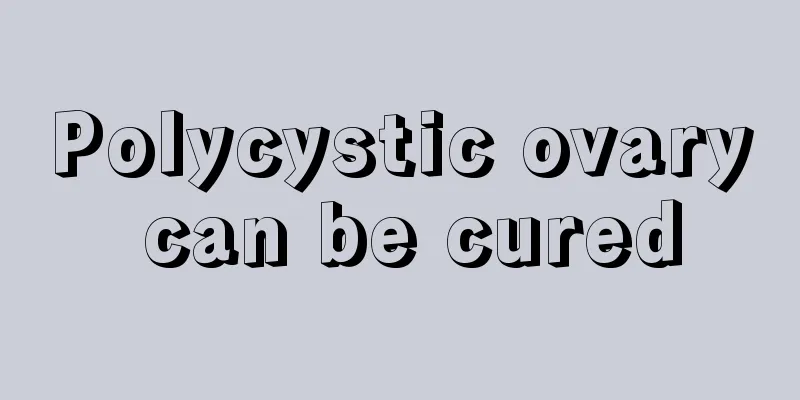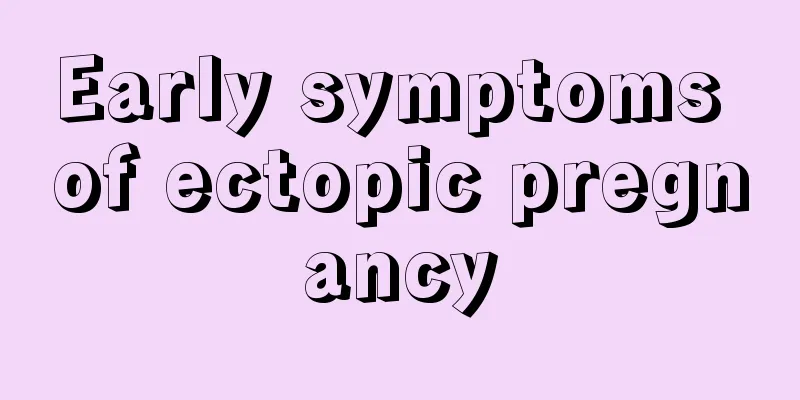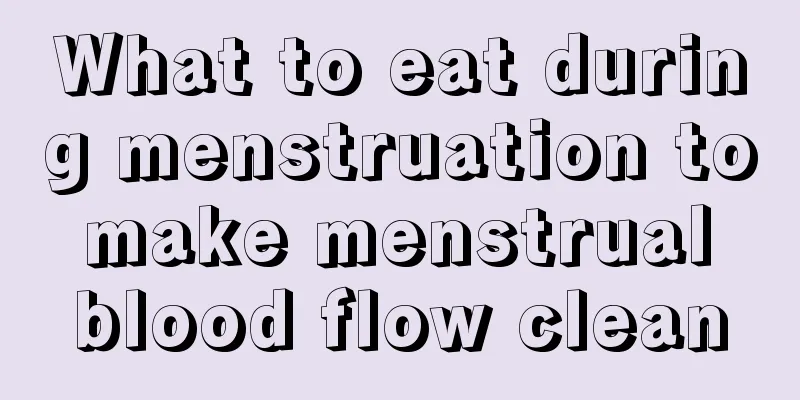Polycystic ovary can be cured

|
Polycystic ovary is the main cause of female infertility. When women feel unbearable abdominal pain during menstruation, it is likely that they have polycystic ovary disease, which must be actively treated. Polycystic ovary is also related to the degree of obesity. Most patients with polycystic ovary are obese. Exercise and weight loss can also help with treatment. So can polycystic ovary be completely cured? The main purpose of PCOS treatment is to establish a normal menstrual cycle with ovulation, restore fertility, and eliminate hirsutism. Based on the symptoms of polycystic ovary disease, it can be inferred that if patients want to succeed, they should first ovulate normally and establish a normal menstrual cycle. At this time, if the ovaries no longer produce too much androgen, the hirsutism will disappear. Treatments for polycystic ovary disease include: 1. Obesity and insulin resistance Increase exercise to lose weight, correct endocrine and metabolic disorders aggravated by obesity, reduce insulin resistance and hyperinsulinemia, reduce IGF-1, increase IGfBP-1, and at the same time increase SHBG to reduce free androgen levels. Losing weight can restore ovulation in some obese women with PCOS and prevent the occurrence of type 2 diabetes and cardiovascular disease. Metformin treatment can be used for patients with or without diabetes. It can effectively reduce body weight, improve insulin sensitivity, lower insulin levels, reduce hair loss and even restore menstruation (25%) and ovulation. Since obesity and insulin resistance are the main causes of PCOS, any drug that can reduce weight and increase insulin sensitivity can treat this syndrome. 2. Drug-induced ovulation (1) Clomiphene is the drug of choice for PCOS, with an ovulation rate of 60% to 80% and a pregnancy rate of 30% to 50%. Clomiphene competes with endogenous estrogen receptors at the hypothalamus-pituitary level, inhibits estrogen negative feedback, increases the pulse frequency of GnRH secretion, and thus adjusts the secretion ratio of LH and FSH. Clomiphene also directly stimulates the ovaries to synthesize and secrete estrogen. After taking this drug, the ovaries may enlarge due to overstimulation (13.6%), vasodilation may cause hot flashes (10.4%), abdominal discomfort (5.5%), blurred vision (1.5%), or side effects such as rash and mild hair loss may occur. During treatment, it is necessary to record the basal body temperature of the menstrual cycle, monitor ovulation, or measure serum progesterone and estradiol to confirm whether ovulation occurs and guide the adjustment of the dosage for the next treatment course. If there is still no ovulation or conception after 6 to 12 months of clomiphene treatment, clomiphene plus HCG or glucocorticoids, bromocriptine or HMG, FSH, GnRH, etc. can be given. (2) Combination of clomiphene and human chorionic gonadotropin (HCG): HCG should be added on the 7th day after discontinuation of clomiphene. (3) The effect of glucocorticoids combined with clomiphene is based on its ability to inhibit excessive androgen secretion from the ovaries or adrenal glands. Dexamethasone or prednisone is usually used. The effective rate within 2 months is 35.7%, and the ovarian function of patients with amenorrhea and anovulation is restored to a certain extent. When clomiphene is ineffective in inducing ovulation, dexamethasone can be added during the treatment cycle. (4) Human gonadotropin (HMG) is mainly used for patients with decreased endogenous pituitary gonadotropin and estrogen secretion. Human gonadotropin (HMG) is an extract purified from the urine of menopausal women. It contains FSH and LH in a ratio of 1:1. Each ampoule contains 75 U of FSH and LH respectively. Human gonadotropin (HMG) is considered as an alternative ovulation-inducing drug for the treatment of anovulatory infertility, but it has many side effects and a greater risk of inducing ovarian hyperstimulation syndrome (OHSS). The therapeutic dose of human chorionic gonadotropin (HCG) should vary according to the individual and treatment cycle, and strict follicle maturation monitoring measures should be in place to prevent the occurrence of ovarian hyperstimulation syndrome (OHSS). (5) Gonadotropin-releasing hormone (GnRH) GnRH can promote the release of FSH and LH from the pituitary gland, but long-term use makes the GnRH receptors of pituitary cells insensitive, leading to a decrease in gonadotropin, thereby reducing the synthesis of ovarian sex hormones. Its effect is reversible. It initially stimulates the pituitary FSH, LH and ovarian sex hormones, which then drop to normal levels after 14 days and reach castration levels after 28 days. However, due to the high cost and large dosage of GnRH-A, its clinical application is limited. |
<<: Gynecological Bartholin's gland cyst
>>: Polycystic ovary pregnancy
Recommend
The yolk sac and dot-shaped embryo bud are visible
Nowadays, people's living standards are const...
Kidney Disease Popular Science | What terrible complications does nephrotic syndrome bring?
Xiao Wu, who was only 28 years old, went to the l...
Reasons for short menstrual periods
What every woman must have is menstruation, becau...
Natural childbirth has more complications than caesarean section
Women also face many problems when giving birth. ...
How long does it take to have an abortion after 40 days?
Chinese women need to stay in confinement after g...
Oral diseases caused by taking medicine (Part 3) - lichenoid reaction
The oral ADEs mentioned above include erosion, dr...
How to massage breasts during lactation
After birth, the baby needs to rely on the mother...
Can macadamia lower blood pressure? What does macadamia taste like?
Macadamia nuts are one of the most nutritious and...
Is it normal to have stomach pain during 3 weeks of pregnancy?
As we all know, pregnant women usually experience...
What is the reason for women's right waist pain
Many women have experienced lower back pain, but ...
My period came back after a week.
As we all know, menstruation usually occurs once ...
What the hell? Why don't many women have hair here?
Pubic hair is a sign of the maturity of female re...
Things to note about how long it will take to get your period after a painless abortion
With the development of modern medicine, people h...
What are the benefits of having a small cervix?
There is no benefit in having a small cervical gr...









